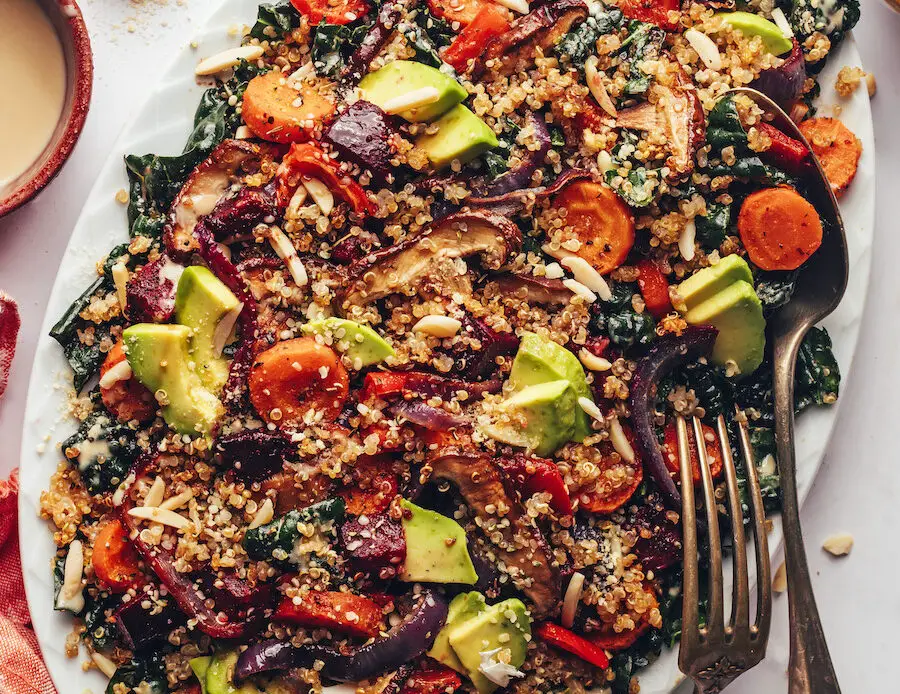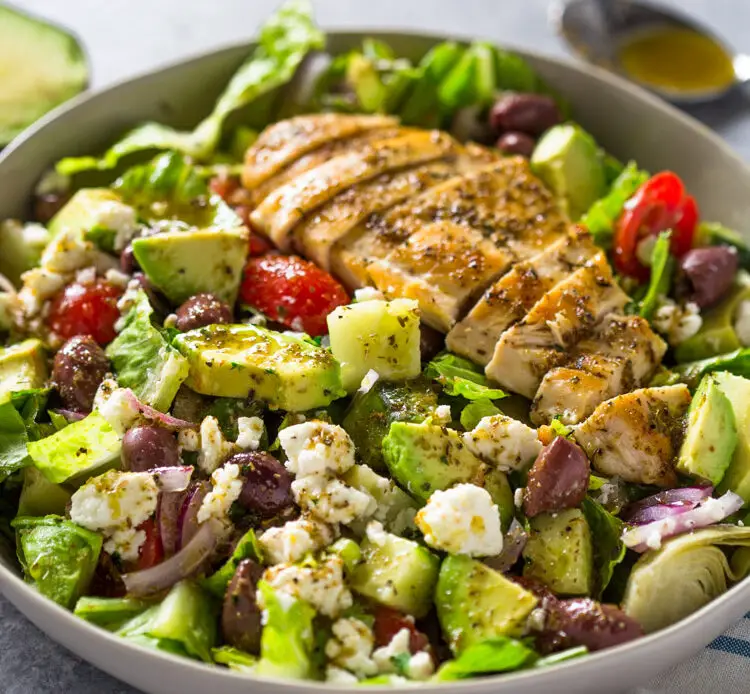Healthy eating does not have to be about bland food, juices, or drinks that taste more like medicine. It is all about finding the right ingredients, your methods of preparation and the healthy choices you are making. Ensure that the foods, vegetables, fruits, nuts, etcetera will ultimately be nutritious, delicious, tolerable and easy to consume.
In other words, easy healthy eating means choosing a variety of foods, vegetables, fruits, and nuts that give the body the proper nutrients it needs to work well.
By eating healthy your body will stay healthy. It will prevent most diseases from taking over the body. It will boost your mood, increase energy, and yes, we are all obsessed about losing weight. Eating healthy is the number one reason to keep off unhealthy weight. Hence, we can be assured that healthy eating assists tremendously in keeping off excessive weight.
But you know what I personally like, Yes! The significant fact that eating healthy contributes to a longer, healthier life by keeping the body in good shape and preventing sickness. Eating healthy is key to feeling good and staying active with the objective of helping us enjoy life to the fullest.
The Core Principles of Easy Healthy Eating
1. Variety is Key
Incorporate a wide range of foods into your diet to ensure you get all the essential nutrients your body needs. This means eating a rainbow of fruits and vegetables, choosing different sources of protein, and including healthy fats and whole grains in your meals.
2. Nutrient-Dense Choices:
Focus on foods that are high in nutrients but relatively low in calories. These include leafy greens, berries, nuts, seeds, lean proteins, and whole grains. Nutrient-dense foods help you feel full and satisfied while providing your body with the vitamins and minerals it needs to function properly.
3. Balanced Meals
Aim to create balanced meals that include a source of protein, healthy fats, and fiber-rich carbohydrates. This balance helps to stabilize blood sugar levels, keep you energized, and prevent overeating.
Benefits of Healthy Eating
1. Disease Prevention
A healthy diet can significantly reduce the risk of chronic diseases such as heart disease, diabetes, and certain cancers. By providing your body with the nutrients it needs, you strengthen your immune system and improve overall health.
2. Mood and Energy Boost
Eating a well-balanced diet can improve your mood and increase your energy levels. Nutrient-rich foods support brain health and help regulate mood swings, making you feel more positive and energetic throughout the day.
3. Weight Management
One of the most effective ways to maintain a healthy weight is through a nutritious diet. Healthy eating helps regulate your appetite, reduces cravings for unhealthy foods, and promotes fat loss while preserving muscle mass.
4. Longevity and Quality of Life
Eating healthy contributes to a longer, healthier life by keeping your body in good shape and preventing illness. It enables you to stay active, feel good, and enjoy life to the fullest.
Tips for Easy Healthy Eating
1. Plan Ahead

Planning your meals and snacks in advance is a powerful strategy for maintaining a healthy diet and ensuring that you always have nutritious options available. Here are some key benefits and tips for effective meal and snack planning:
Benefits:
- Improved Nutrition:
- When you plan your meals, you can ensure they include a balanced mix of proteins, carbohydrates, fats, vitamins, and minerals.
- You can also control portion sizes and avoid the excess calories and unhealthy fats often found in convenience foods.
- Cost Savings:
- Planning meals allows you to buy ingredients in bulk and take advantage of sales, which can significantly reduce your grocery bill.
- You can also minimize food waste by only purchasing what you need for your planned meals.
- Time Efficiency:
- By preparing meals in advance, you can save time during busy weekdays when cooking from scratch might not be feasible.
- Batch cooking and meal prepping can be done during weekends or days off, making weekday meals quick and easy to assemble.
- Better Eating Habits:
- Having healthy snacks and meals readily available reduces the temptation to opt for fast food or unhealthy snacks when you’re hungry.
- It also helps you maintain consistent eating patterns, which can contribute to better overall health.
By planning your meals and snacks in advance, you can take control of your diet, improve your overall health, and enjoy delicious, nutritious meals without the stress and last-minute decisions that often lead to unhealthy choices.
2. Cook at Home
Preparing meals at home allows you to control the ingredients and portion sizes, making it easier to eat healthily. Experiment with new recipes and cooking methods to keep things interesting.
Benefits of Preparing Meals at Home:
- Ingredient Control:
- Quality and Freshness: When you cook at home, you choose fresh, high-quality ingredients. This means fewer preservatives, additives, and unhealthy fats compared to processed or restaurant foods.
- Nutrient-Dense Choices: You can incorporate a variety of nutrient-dense foods like vegetables, whole grains, lean proteins, and healthy fats into your meals.
- Reduced Sugar and Salt: Control the amount of sugar and salt in your dishes, avoiding the excessive amounts often found in takeout and packaged foods.
- Portion Control:
- Appropriate Serving Sizes: Cooking at home allows you to serve appropriate portion sizes, which can help with weight management and prevent overeating.
- Leftovers: Homemade meals often result in leftovers that can be portioned out for future meals, saving time and ensuring continued healthy eating.
- Customization:
- Dietary Preferences and Restrictions: Easily cater to dietary preferences and restrictions, such as gluten-free, vegan, or low-carb diets.
- Flavor Adjustments: Customize flavors to your liking, experimenting with spices and herbs to enhance the taste without adding unhealthy ingredients.
3. Keep it Simple

Healthy eating doesn’t have to be complicated. Focus on whole, minimally processed foods and simple recipes that highlight the natural flavors of the ingredients.
Tips for Simplifying Healthy Eating:
- Focus on Whole Foods:
- Fruits and Vegetables: Incorporate a variety of colorful fruits and vegetables into your diet. Aim for at least five servings per day.
- Whole Grains: Choose whole grains such as quinoa, brown rice, oats, and whole wheat bread over refined grains.
- Lean Proteins: Opt for lean protein sources like chicken, fish, beans, lentils, tofu, and eggs.
- Healthy Fats: Include sources of healthy fats such as avocados, nuts, seeds, and olive oil.
- Keep Recipes Simple:
- Simple Ingredients: Use a few high-quality ingredients to create delicious and nutritious meals. For example, a salad with fresh greens, tomatoes, cucumbers, and a drizzle of olive oil and lemon juice.
- Easy Cooking Methods: Stick to basic cooking methods like grilling, roasting, steaming, and sautéing, which preserve the natural flavors and nutrients of the ingredients.
- Meal Planning and Preparation:
- Plan Ahead: Plan your meals and snacks for the week to ensure you have all the necessary ingredients on hand.
- Prep in Advance: Prepare ingredients in advance, such as chopping vegetables, cooking grains, and marinating proteins, to make meal preparation quick and easy during the week.
- Balanced Meals:
- Combine Food Groups: Create balanced meals by combining different food groups. For example, pair lean protein with vegetables and whole grains for a complete meal.
- Portion Control: Serve appropriate portion sizes to avoid overeating and ensure a balanced intake of nutrients.
- Healthy Snacking:
- Whole Food Snacks: Choose whole food snacks like fresh fruit, raw nuts, yogurt, or vegetable sticks with hummus.
- Avoid Processed Snacks: Limit consumption of highly processed snacks like chips, cookies, and sugary drinks.
- Flavor Enhancements:
- Herbs and Spices: Use herbs and spices to add flavor without adding extra calories, salt, or sugar. Fresh herbs like basil, cilantro, and parsley, as well as spices like turmeric, cumin, and paprika, can elevate the taste of your dishes.
- Natural Sweeteners: Use natural sweeteners like honey, maple syrup, or fruit to satisfy sweet cravings in a healthier way.
- Mindful Eating:
- Enjoy Your Meals: Take time to savor your meals, eat slowly, and appreciate the flavors and textures of your food.
- Listen to Your Body: Pay attention to hunger and fullness cues to avoid overeating and promote a healthy relationship with food.
4. Stay Hydrated

Drink plenty of water throughout the day to stay hydrated. Sometimes, thirst is mistaken for hunger, leading to unnecessary snacking.
Importance of Staying Hydrated:
- Essential for Bodily Functions:
- Cellular Health: Water is vital for every cell in your body, aiding in nutrient absorption, oxygen delivery, and waste removal.
- Temperature Regulation: It helps regulate body temperature through sweating and respiration.
- Digestion: Water is crucial for digestion and helps maintain the health of the gastrointestinal tract by facilitating the breakdown and absorption of nutrients.
- Energy and Brain Function:
- Mental Clarity: Even mild dehydration can impair cognitive functions such as concentration, alertness, and short-term memory.
- Physical Performance: Proper hydration improves physical performance by maintaining muscle function, reducing fatigue, and preventing cramps.
- Detoxification:
- Kidney Function: Water aids the kidneys in filtering and expelling waste products and toxins through urine.
- Skin Health: Adequate hydration can help maintain healthy skin by flushing out toxins and maintaining elasticity.
Role of Hydration in Hunger and Snacking
- Preventing Mistaken Hunger:
- Reducing Caloric Intake:
- Pre-meal Hydration: Drinking a glass of water before meals can create a sense of fullness, helping to control portion sizes and reduce overall caloric intake.
- Healthy Substitution: Choosing water over sugary beverages reduces the intake of empty calories and added sugars, contributing to better weight management and overall health.
- Thirst vs. Hunger: The body can sometimes misinterpret thirst signals as hunger, leading to unnecessary snacking. Drinking water can help differentiate between true hunger and thirst.
- Appetite Regulation: Staying hydrated helps regulate appetite, making it easier to maintain a healthy eating pattern and avoid overeating.
By making hydration a priority and integrating these tips into your daily routine, you can maintain optimal health, reduce the risk of mistaking thirst for hunger, and minimize unnecessary snacking. Drinking plenty of water throughout the day is a simple yet effective strategy for supporting overall well-being.
5. Listen to Your Body

Paying attention to your hunger and fullness cues is a fundamental aspect of maintaining a healthy relationship with food and promoting overall well-being. By tuning into these natural signals, you can better manage your eating habits, avoid overeating, and support a balanced diet. Here’s a detailed exploration of why this practice is important and how to effectively implement it:
Importance of Recognizing Hunger and Fullness Cues:
- Prevent Overeating:
- Mindful Eating: By eating when you’re truly hungry and stopping when you’re satisfied, you avoid the discomfort and negative health impacts associated with overeating.
- Portion Control: Tuning into your body’s signals helps you serve and consume appropriate portion sizes, preventing excessive calorie intake.
- Support Healthy Weight Management:
- Natural Regulation: Your body has natural mechanisms to regulate energy intake and expenditure. Paying attention to hunger and fullness helps maintain a healthy weight by balancing these processes.
- Avoid Emotional Eating: Differentiating between physical hunger and emotional triggers (such as stress or boredom) can reduce the likelihood of using food to cope with emotions.
- Improve Digestive Health:
- Better Digestion: Eating when hungry ensures that your digestive system is prepared to handle food, leading to more efficient digestion and nutrient absorption.
- Preventing Discomfort: Stopping when satisfied prevents overeating, which can cause discomfort, bloating, and digestive issues.
Tips for Recognizing and Responding to Hunger and Fullness Cues:
- Understand Your Hunger Signals:
- Physical Hunger: Look for signs of physical hunger, such as stomach growling, a feeling of emptiness, lightheadedness, or low energy.
- Emotional vs. Physical: Differentiate between physical hunger and emotional cravings. Physical hunger builds gradually and can be satisfied with a variety of foods, while emotional hunger often comes suddenly and is specific to certain comfort foods.
- Eat Mindfully:
- Slow Down: Take your time when eating, allowing your body to register feelings of fullness. It takes about 20 minutes for your brain to receive signals from your stomach.
- Savor Your Food: Pay attention to the flavors, textures, and aromas of your food. This enhances the eating experience and helps you feel more satisfied.
- Listen to Fullness Cues:
- Check-In with Yourself: Periodically pause during meals to assess your level of hunger and fullness. Ask yourself if you are still hungry or starting to feel satisfied.
- Avoid Clean Plate Mentality: Don’t feel obligated to finish everything on your plate. It’s okay to stop eating when you’re satisfied, even if there is food left.
- Create a Supportive Eating Environment:
- Minimize Distractions: Eat without distractions like TV, phones, or computers. Focusing on your meal helps you stay attuned to your body’s signals.
- Set the Scene: Create a pleasant eating environment by setting the table, sitting down, and making meals an enjoyable experience.
- Practice Portion Control:
- Serve Smaller Portions: Start with smaller portions and allow yourself to take more if you’re still hungry. This helps prevent overeating from the outset.
- Use Visual Cues: Use smaller plates and bowls to help control portion sizes visually. This can trick your brain into feeling satisfied with less food.
- Address Emotional Eating:
- Find Alternatives: Identify non-food-related ways to cope with emotions, such as exercising, meditating, talking to a friend, or engaging in a hobby.
- Seek Support: If emotional eating is a significant issue, consider seeking support from a therapist or counselor who can help you develop healthier coping strategies.
Delicious and Nutritious Recipes to Try
1. Healthy Carrot Juice Mixed with Unsweetened/Sweetened Almond Milk

This easy healthy eating juice recipe with carrots and almond milk provides a mixture of vitamins A, K1, C potassium, fiber, antioxidants, B vitamins and trace minerals nutrients from the carrot.
Almond milk is plant-based, hence, you do not have to be concerned about possible dairy or gluten effects on your system. This pure unsweetened almond milk is super-nutritious and provides the body with vitamins E, D, A, B12, calcium, protein and healthy fats.
Ingredients
– 6 large carrots
– 1 (8OZ) glass unsweetened/sweetened almond milk
– 1 tsp. Mixed spice
– 1 tsp. Grated nutmeg
– 1 tsp. Vanilla
– ¼ cup red wine
– 1 tsp. Organic honey (optional)
Method
1. Wash carrots properly under running pipe water. Submerge the carrots in this mixture
allow to soak for 20 – 30 minutes. Rinse
2. Place carrots into juicer/blender until finish juicing or blending.
3. Pour carrot juice into a container.
4. Add almond milk, nutmeg, vanilla, wine and honey and mix thoroughlY.
5. Cover and allow juice to chill for 3 minutes in refrigerator or add ice into a drinking glass
or container and pour carrot juice onto ice.
Enjoy your glass of easy healthy Vitamins, protein, etcetera.
2. Quinoa Salad with Roasted Vegetables:

Ingredients:
- For the Quinoa:
- 1 cup quinoa
- 2 cups water or vegetable broth
- 1/2 teaspoon salt
- For the Roasted Vegetables:
- 1 red bell pepper, chopped
- 1 yellow bell pepper, chopped
- 1 zucchini, chopped
- 1 red onion, chopped
- 1 cup cherry tomatoes, halved
- 2 tablespoons olive oil
- 1 teaspoon dried oregano
- 1 teaspoon dried thyme
- Salt and pepper to taste
- For the Dressing:
- 3 tablespoons olive oil
- 1 tablespoon lemon juice
- 1 clove garlic, minced
- Salt and pepper to taste
Method:
- Prepare the Quinoa:
- Rinse the quinoa under cold water using a fine-mesh sieve.
- In a medium saucepan, combine the quinoa, water or vegetable broth, and salt. Bring to a boil.
- Reduce the heat to low, cover, and simmer for about 15 minutes or until the quinoa is tender and the liquid is absorbed.
- Remove from heat and let it sit, covered, for 5 minutes. Fluff with a fork.
- Roast the Vegetables:
- Preheat your oven to 400°F (200°C).
- In a large mixing bowl, combine the chopped red bell pepper, yellow bell pepper, zucchini, red onion, and cherry tomatoes.
- Drizzle the vegetables with 2 tablespoons of olive oil, and sprinkle with dried oregano, dried thyme, salt, and pepper. Toss to coat evenly.
- Spread the vegetables in a single layer on a baking sheet.
- Roast in the preheated oven for 20-25 minutes, or until the vegetables are tender and slightly caramelized, stirring halfway through.
- Prepare the Dressing:
- In a small bowl, whisk together the olive oil, lemon juice, minced garlic, salt, and pepper.
- Combine and Serve:
- In a large bowl, combine the cooked quinoa and the roasted vegetables.
- Drizzle the dressing over the quinoa and vegetables. Toss gently to combine.
- Taste and adjust seasoning if needed.
- Serve warm or at room temperature.
3. Grilled Chicken with Avocado Salsa:

Ingredients:
- For the Grilled Chicken:
- 4 boneless, skinless chicken breasts
- 2 tablespoons olive oil
- 2 cloves garlic, minced
- 1 teaspoon ground cumin
- 1 teaspoon paprika
- 1 teaspoon salt
- 1/2 teaspoon black pepper
- 1/2 teaspoon chili powder
- Juice of 1 lime
- For the Avocado Salsa:
- 2 ripe avocados, diced
- 1 cup cherry tomatoes, halved
- 1/4 cup red onion, finely chopped
- 1/4 cup fresh cilantro, chopped
- Juice of 1 lime
- Salt and pepper to taste
Method:
- Prepare the Grilled Chicken:
- In a small bowl, mix together the olive oil, minced garlic, ground cumin, paprika, salt, black pepper, chili powder, and lime juice.
- Place the chicken breasts in a large resealable plastic bag or a shallow dish. Pour the marinade over the chicken, ensuring each piece is well coated.
- Marinate the chicken in the refrigerator for at least 30 minutes, preferably 1-2 hours.
- Grill the Chicken:
- Preheat the grill to medium-high heat.
- Remove the chicken from the marinade and discard the marinade.
- Grill the chicken for 6-7 minutes per side, or until the internal temperature reaches 165°F (74°C) and the chicken is cooked through.
- Remove from the grill and let the chicken rest for a few minutes before serving.
- Prepare the Avocado Salsa:
- In a medium bowl, combine the diced avocados, cherry tomatoes, red onion, and fresh cilantro.
- Add the lime juice, salt, and pepper. Gently toss to combine.
- Serve:
- Place the grilled chicken breasts on a serving platter.
- Spoon the avocado salsa over the top of the chicken.
- Serve immediately.
Enjoy your grilled chicken with avocado salsa! This dish is a flavorful and healthy option for any meal.

